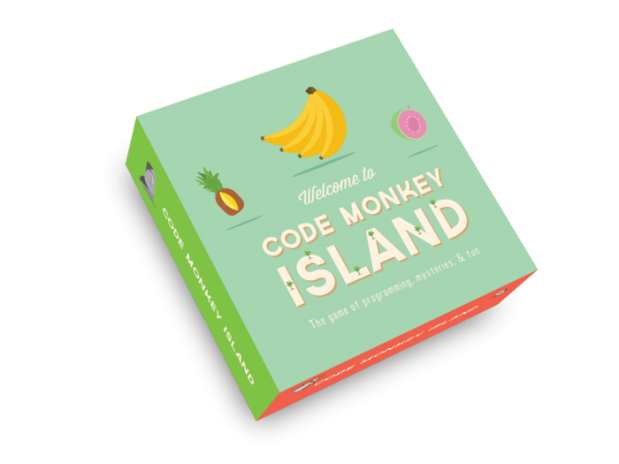About Code Monkey Island
Code Monkey Island is a fun and interactive board game that introduces students (Year 3+) to real life programming concepts. This game engages children in computational thinking and teaches them about concepts such as;
- conditional statements
- basic loops
- boolean logic
- strategic thinking,
By the end of the game, players will have obtained a sound understanding of these programming concepts intended, in a fun and exciting way. It’s literally child’s play!
This game would make a great addition to year 3-6 classrooms when introducing the above programming concepts to students. It could also be followed by assessments to reinforce the learning and to check for understanding of key concepts.
Playing the game
Code Monkey Island is easy to play and can be played with 2-4 players. Players use cards with statements such as, “For each monkey NOT on a rock, move 3 spaces,” or “if one of your monkeys in in the banana grove, move 10 spaces”, to get all of their monkeys successfully around the island and into the banana grove to win.Players need to think strategically and solve plenty of computational problems along the way.
Here is a short clip on how to play Code Monkey Island:
Subject: Technologies
Strand: Digital Technologies
Substrand: Processes and production skills
Content descriptors
3-4: Use simple visual programming environments that include a sequence of steps (algorithm) involving decisions made by the user (branching) (ACTDIP011)
5-6: Design, modify, follow and represent both diagrammatically, and in written text, simple algorithms (sequence of steps) involving branching (decisions) and iteration(repetition) (ACTDIP019)
- Numeracy
- Information and Communication Technology (ICT) Capability
- Critical and Creative Thinking
Links to other learning areas
- English
- Mathematics
Code Monkey Island Link








